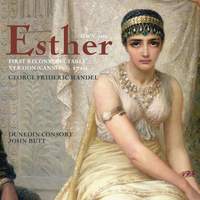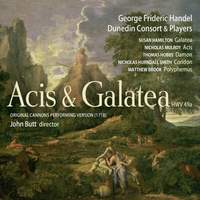Interview,
John Butt on Mozart's Requiem
 The Dunedin Consort's director discusses the challenges of recreating the first performance of Mozart's enigmatic final work for their new recording on Linn Records, made in Edinburgh's Greyfriar's Kirk last September and released this week.
The Dunedin Consort's director discusses the challenges of recreating the first performance of Mozart's enigmatic final work for their new recording on Linn Records, made in Edinburgh's Greyfriar's Kirk last September and released this week.
Your mission on this recording was to recreate the premiere of Mozart's Requiem, but just how close to the composer's intentions was that first performance? How much do we really know, in fact, about what his intentions were?
>Well, all we know is that Mozart was commissioned to write the Requiem for Count Franz von Walsegg, and it is not likely that Mozart was closely informed of the forces involved. Certainly, if Walsegg’s was like other court and church establishments, the vocal forces could have been as small as the 8 singers (four leaders/soloists and four ripienists) that we use in the St Michael’s Church reconstruction at the end of the CD.
>But for the first complete performance (i.e. involving Süssmayr’s completion) we have a relatively good guide to the sort of forces that would have been involved. For this performance was promoted by Baron Gottfried van Swieten, whose ‘Society of musical friends’ had promoted several performances directed by Mozart in the previous years, largely of Mozart’s own arrangements of some of Handel’s dramatic choral music.
>Given the strong influence of Handel on several parts of the Requiem, it is therefore highly likely that Mozart would have approved of the use of the same type of forces in 1793. Fortunately, we have many of the original instrumental and vocal parts for Mozart’s Handel arrangements (e.g. Messiah, Acis and Galatea), so we can duplicate quite directly the size and division of forces that van Swieten was accustomed to employing.
You've employed a relatively small team of singers (just 16 altogether, including the soloists), all with quite soloistic voices - a fairly unusual combination! Does this reflect the team at the original performance, and how did you make it work in the recording-studio?
>The combining of soloists within the choir is actually not an unusual combination from the point of view of the 18th (and indeed 17th) century. A standard practice coming from Italy and current in most German-speaking lands, was to use the soloists as the core of the choir (hence the long drawn out dispute about ‘Bach’s chorus’), to which were added ‘ripienists’ (i.e. ‘fillers’). This is exactly the practice we find in Mozart’s Handel arrangements (i.e. the main soloist per part, doubled in the choruses by up to 3 other singers).
>Although we do not know the names of the ripienists, it is likely that they were developed professional singers. The names of the soloists (usually written on the parts themselves) include such people as Mozart’s sister-in-law, Aloysia Weber, who sang the part of Donna Anna in the first Viennese performance of Don Giovanni. So, again, whether we think of concert performance or professional church performance, it is likely that choirs were led by singers of professional standard and who sang their lines as soloists rather than as the sort of ‘blended’ chorus singer that has become the norm in our practice.
>Given that we have used similar formats for the choirs of our recordings of Bach and Handel (albeit with slightly larger forces here), we are fairly used to performing and recording with a ‘soloist-led’ choir. The main thing is to preserve the individual quality of the four soloists’ lines and use the ripieno singers to add a sort of bloom and fullness to the tone (the volume can obviously be greater too, although there is not a direct doubling of the volume with each extra singer). To my mind, keeping the soloistic character is crucial, provided the blend doesn’t become too ‘dirty’ – which I hope doesn’t happen here!
Tell us a little about your decision regarding Latin pronunciation, which is quite different from that on many other recordings...
>We decided to adopt German/Austrian Latin as far as possible, since this is the likely pronunciation for a vocal group that was not primarily Italian (although, given the connections with Mozart’s opera singers, it is quite possible that some of the original singers were Italian). So our pronunciation is close to what you might still hear today in German/Austrian performances, although there are constant disputes about some of the details (e.g. how different is the Austrian pronunciation? How much has it changed since the 1790s). I’m sure we’ve not got it completely right – but I think it is closer than the Italianate Latin that you so often hear in English-speaking lands.
You're using a new edition of Sussmayr's completion: what major differences can we expect to hear?
>This is a wonderful new resource, not least because it shows so clearly which parts are Mozart’s original composition and which parts were added by Süssmayr. In sections such as the Sequence and Offertory you can directly see where Mozart has given hints as to what the orchestral parts should be, and seeing these can definitely have an influence on the performance (since such indications represent fundamental ideas that we can develop further in the gestures of performance).
>Beyond this, David Black has removed most of the ‘improvements’ that the publishers made in 1800 in preparing the first edition of the Requiem, and which have crept into most versions since. Apart from one or two odd notes (one of which I decided to ‘recorrect’), most of the differences relate to the spacing and order of voices in chords, particularly in the woodwind parts.
>On the whole, though, very few people – even quite expert listeners – will notice much difference in the actual notes we perform, but I hope we’ve captured something of the immanence of Mozart’s draft, as if it is something that is still in the process of composition, even as we hear it.
Other recordings from John Butt and the Dunedin Consort
With superb performances from Robin Blaze, James Gilchrist and Matthew Brook in particular, this recording of one of Handel's lesser-known oratorios was acclaimed by International Record Review for the 'winning drive, dramatic conception and expressive phrasing of Butt's direction'.
Available Formats: MP3, FLAC, Hi-Res FLAC
Using the Original Cannons Performing Version of 1718, the Dunedins deliver an Acis and Galatea of vernal charm and sparkle, with Susan Hamilton and Nicholas Mulroy singing with disarming simplicity in the title roles and Matthew Brook terrifying yet sympathetic as their nemesis Polyphemus.
Available Formats: MP3, FLAC, Hi-Res FLAC




